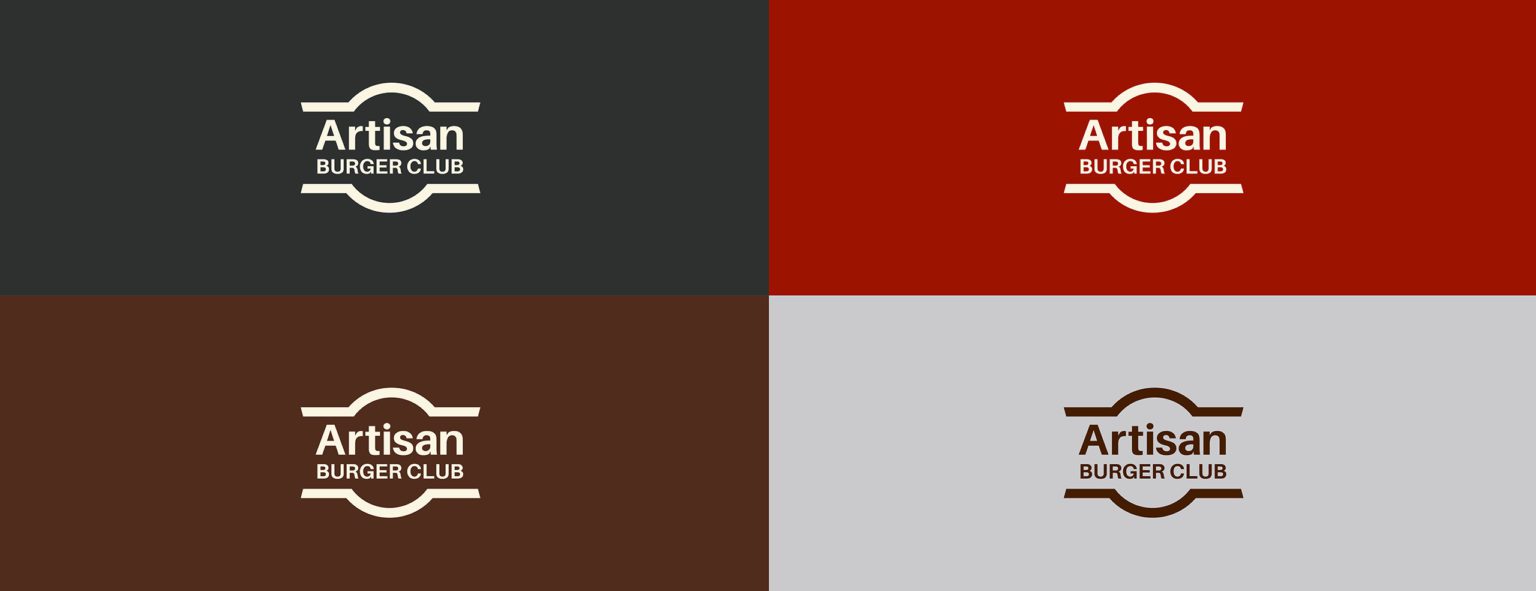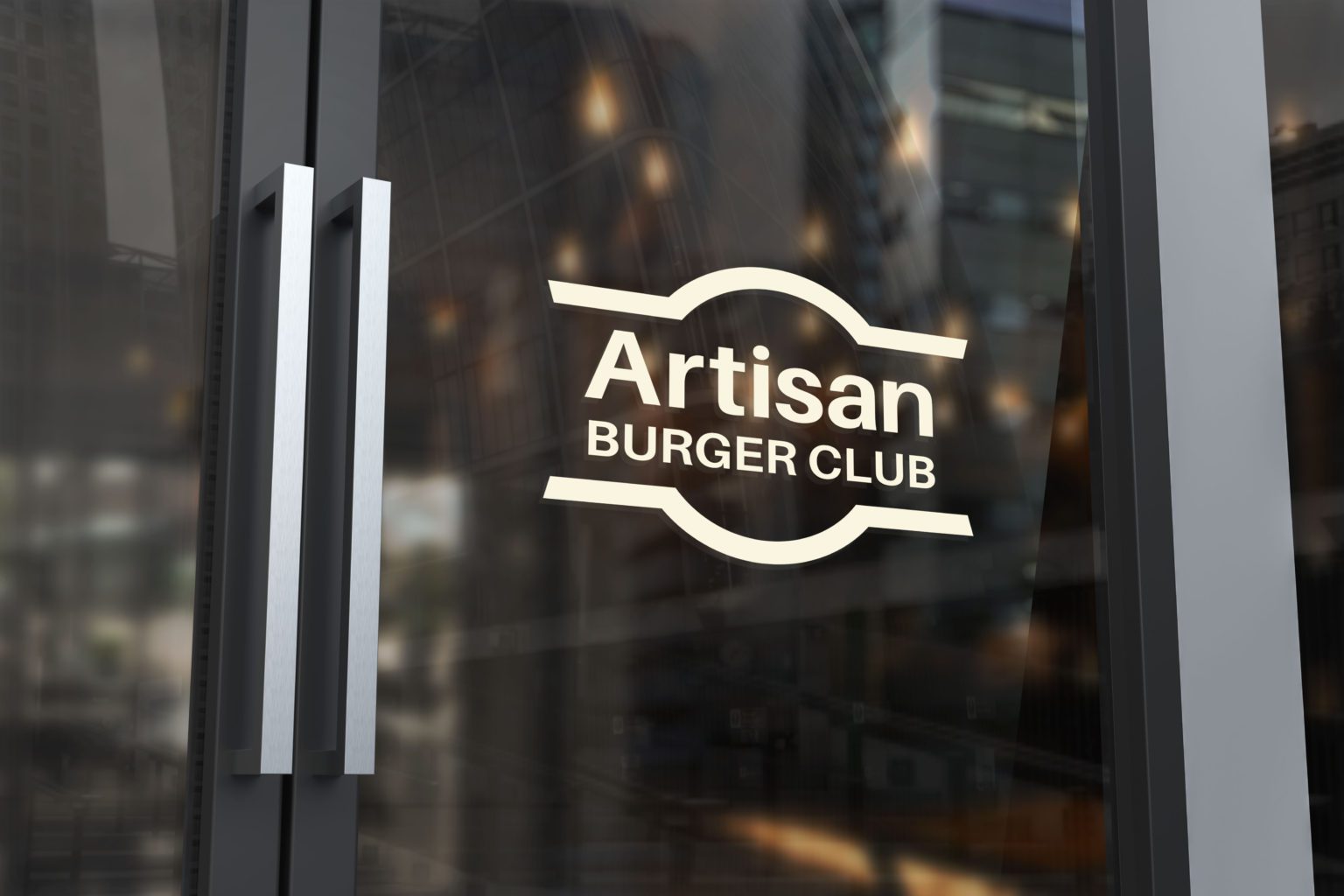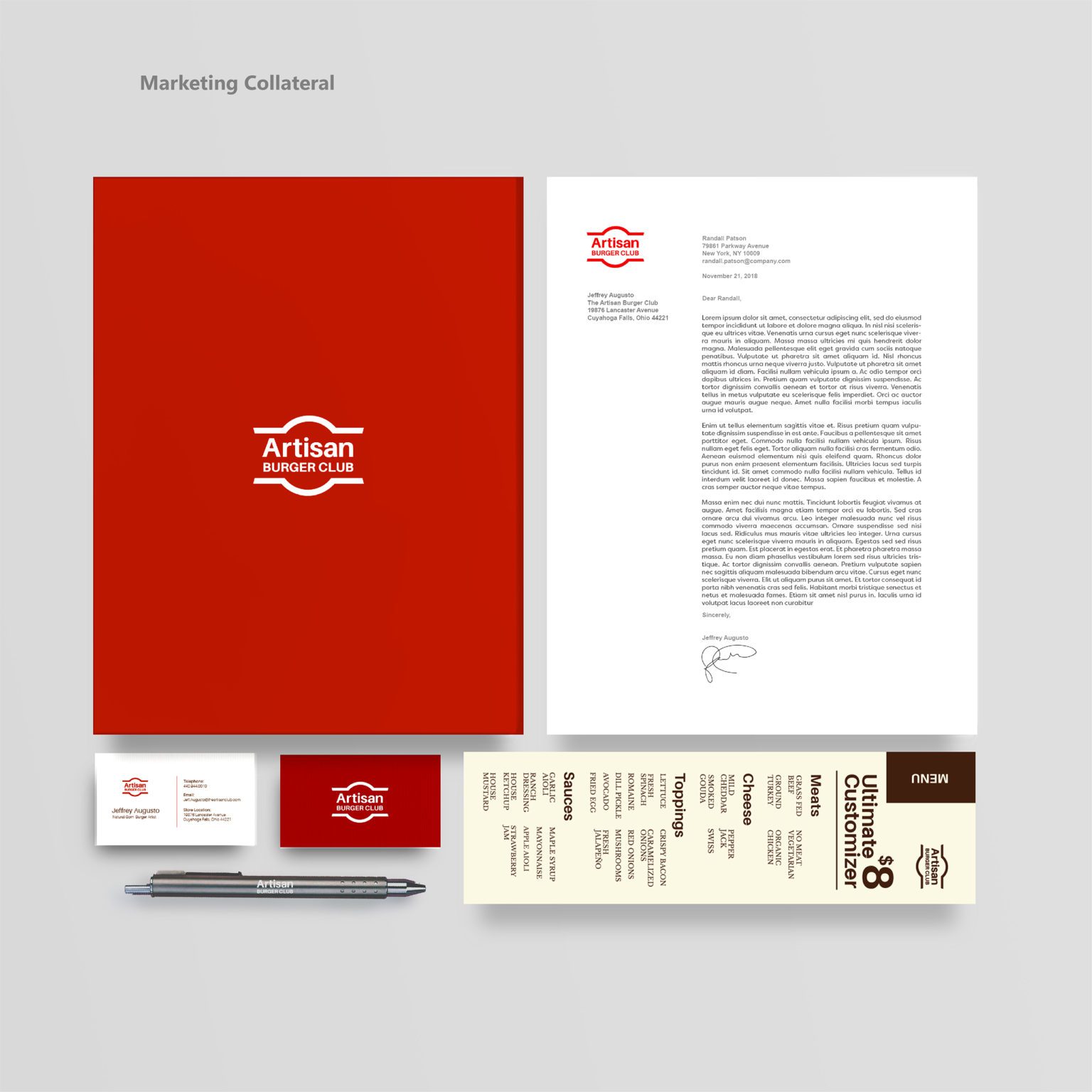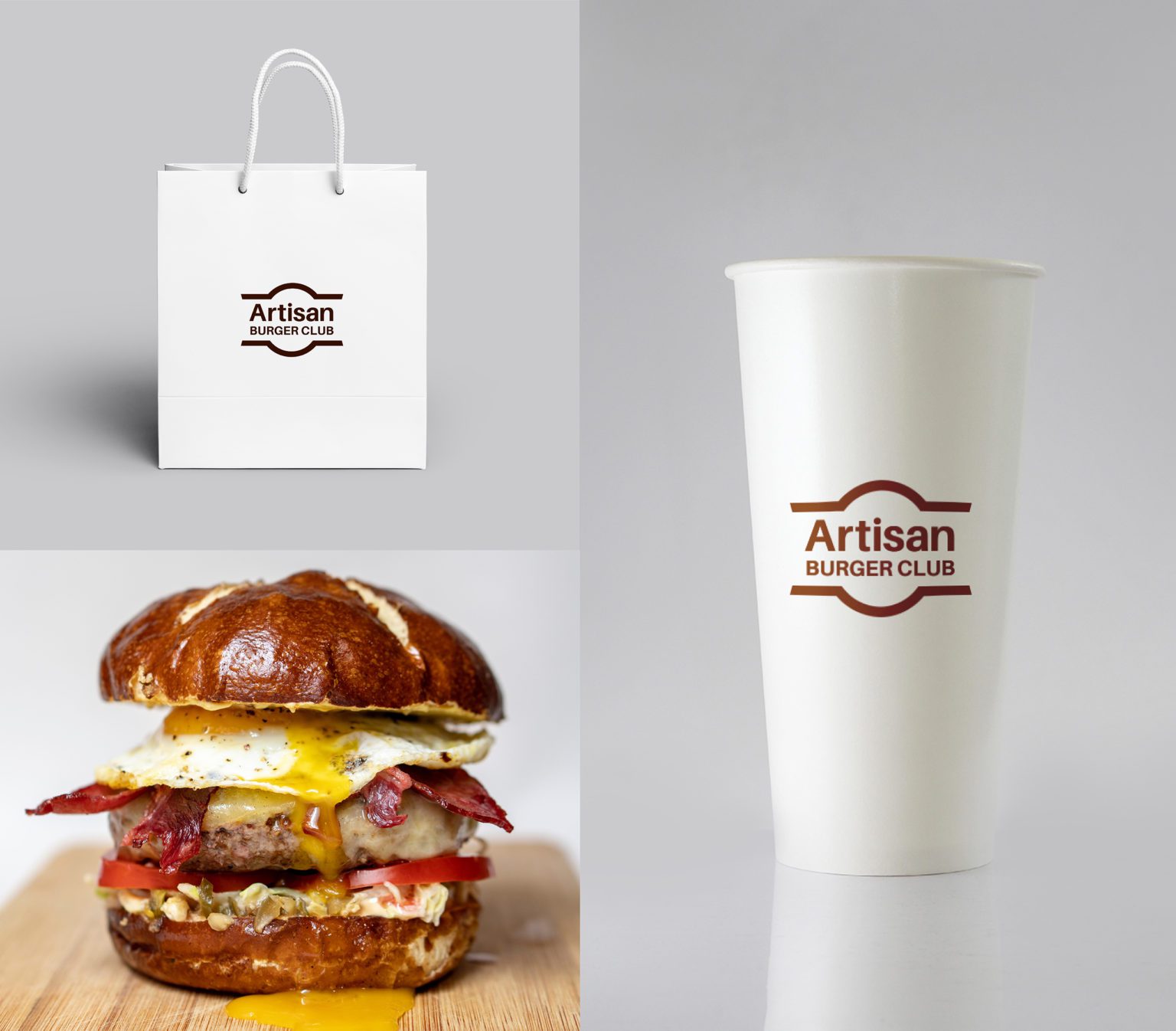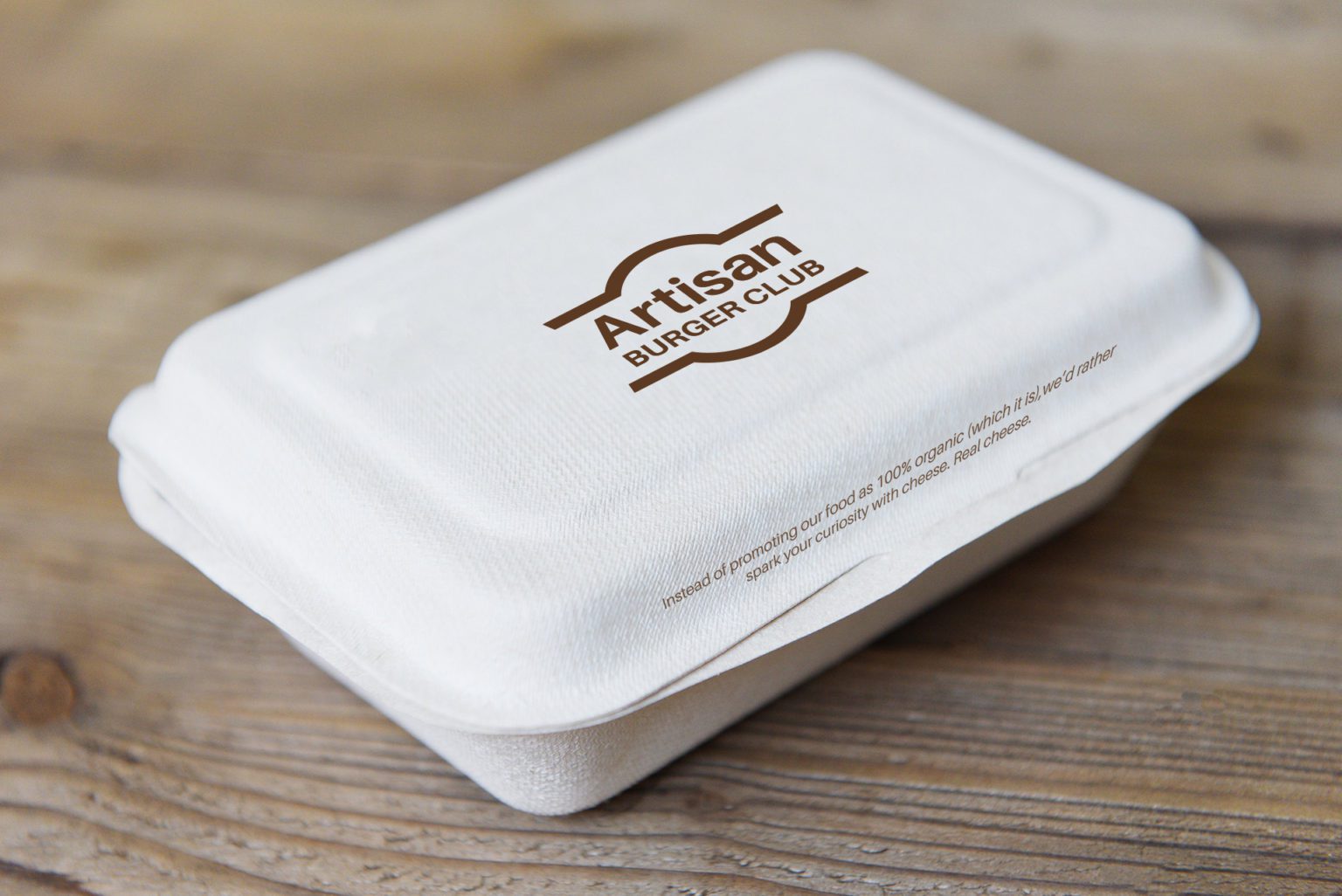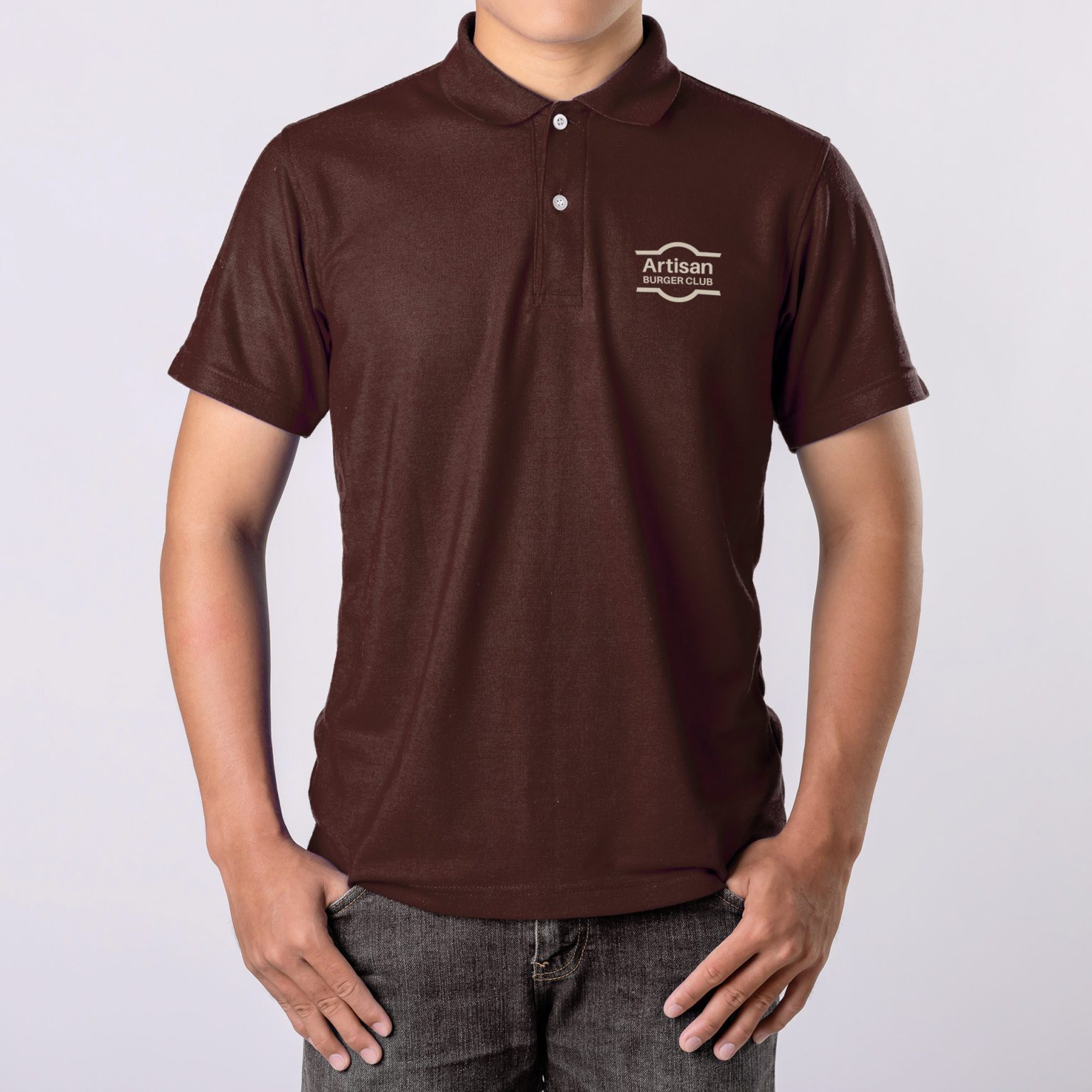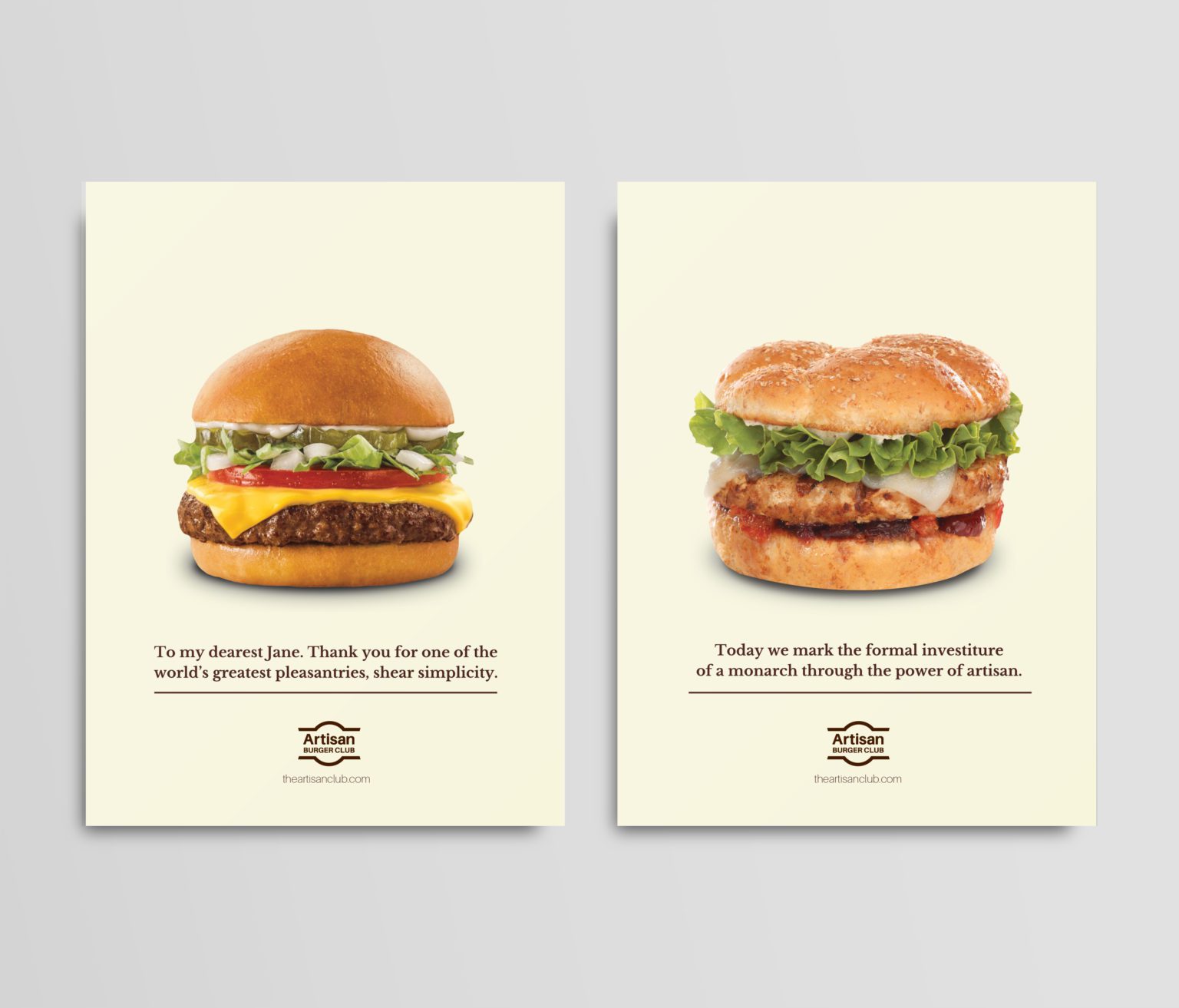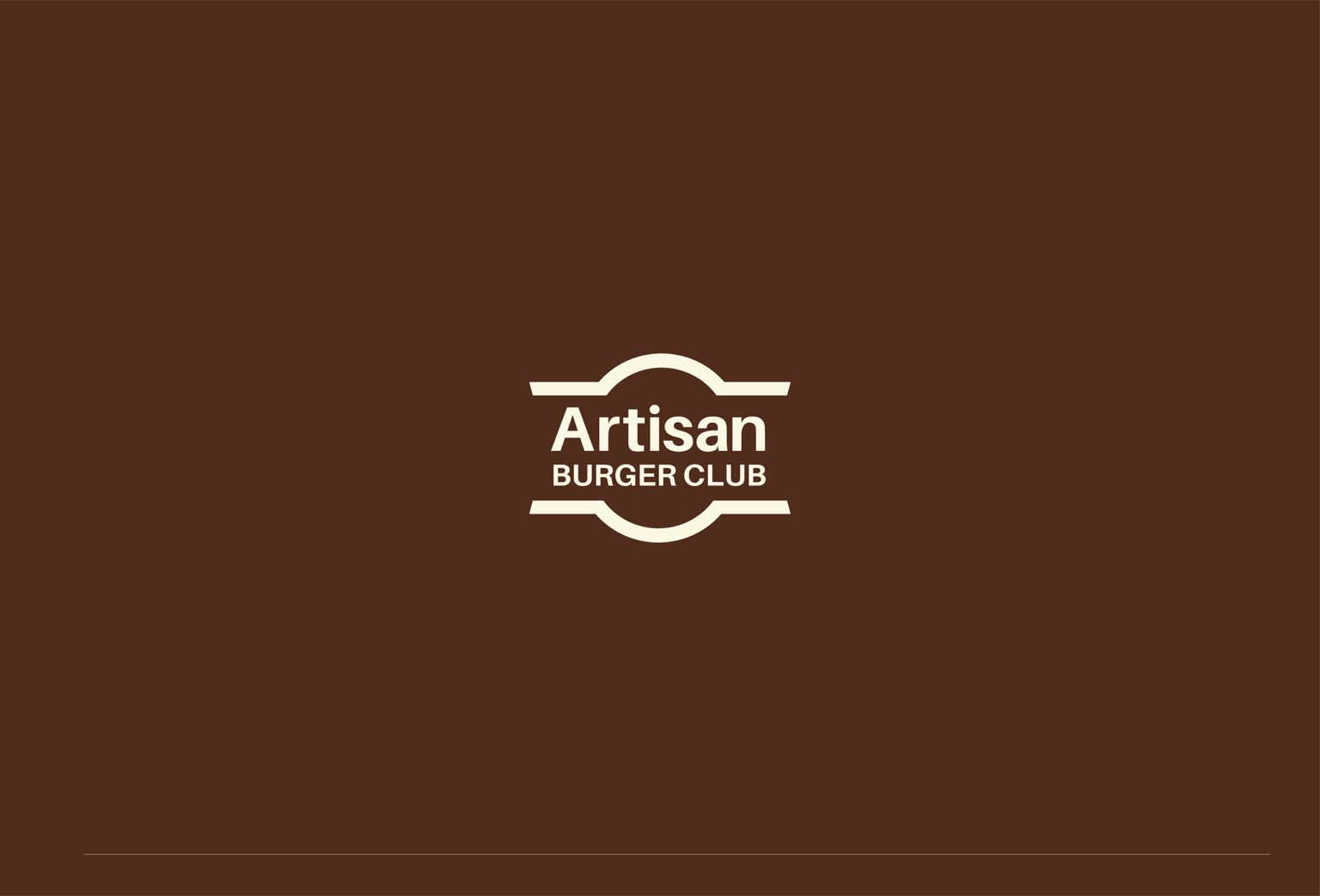
Case Study – 2018
"A fast-casual burger for the busy American consumer."
Scope Of Project
* Brand Strategy
* Brand Messaging
* Visual Identity
* Packaging
* Digital & Printed Assets
Problem
Burgers are convenient but are often seen as an unbalanced and less health-conscious meal option.
While most American adults consume fast food at particular cycles of the day; morning (before work/school) and afternoon (after work/school, or on breaks/in-between classes), as they are up against the clock, majority of people fail to get healthy or higher quality meals.
Solution
A brand with a more strategic focus on trust, transparency, and consumers with an eco-conscious lifestyle. The business is projected to convert burger lovers towards a more conscious experience with fast food.
1
Discovery & Research
Consumer Persona
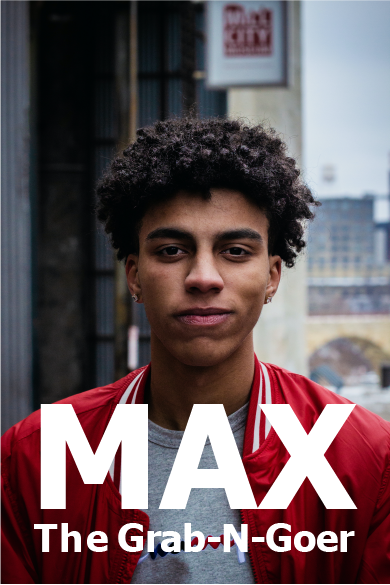
Story
Hi, I’m Max. I’m a 22 year old student studying business at Case Western Reserve. I was raised in a big city along with my family. Back home, my father used to cook, a lot, but since I’ve moved away, my eating habits have changed. Big time. I own a snoodle and think of him as my best friend. Usually, I’m in between work and school, so my days often feel rushed. There’s nothing in the fridge but drinks, because I dine out, often.
Goals
• To start eating healthier.
• To find more time to sit and have lunch.
• Find a restaurant I can frequent.
Motivations
• Sense of eating well.
• Ability to customize food choices.
• Satisfaction per dollar value.
Pain Points
• Doesn’t like to wait in long lines.
• Fast-paced schedule means fast dining.
• Knows his eating habits are bad but can’t change them due to convenience.
• Goes without food for extended periods.
Consumer Survey Takeaways
We surveyed ten fast food consumers, and when the question came up about their favorite places to go for lunch, we learned a higher percentage of them believed choosing a restaurant with the best value per dollar was better. They also hated crowded lines and sought a quicker service time over healthier food options.
Also, each surveyed consumer agreed that having fast food, at any time of day, did in some way make them self-conscious about their bodies.
When asked how they could feel better about themselves after easting fast food, many responded with this:
Top Insight
Most people see a greater value when dining out is efficient, but also honest & transparent when faced with food choices...
Based on articles and additional surveys on the topic of fast-food buying habits, we found a few insights from the National Center for Health Statistics:
a.
During 2007–2010, the highest percentage of calories from fast food was consumed among adults who were aged 20–39.
b.
80% of consumers say they find conflicting information in regard to healthy food. And out of that 80%, 59% say they find conflicting information around the foods they are consuming.
Brand Competitor Research
After learning about the consumers, we turned towards the competitors (burger restaurants) in the fast-food industry. What we found is that “value” often referred to food items with that lower price margin consumers were looking for, and also gave a quicker service time when compared to ordering some other items on the menu.
We also found that there weren’t a lot of options, other than salads, that seemed to be “healthy” enough to balance the overall, bad-to-good-food-ratio at these restaurants. That’s when we took a look to see if there were burger restaurants already leaning towards the fast-casual trend. And sure enough, we found nearly a dozen of them and took a look at their menus, brand messaging, and visual identities.
Top Insight
Most fast-casual burger competitors had the same or similar menu items as our client.
Based on a survey of eight consumers, these items were considered healthier options when compared to restaurants like McDonald's and Burger King, even if the caloric intake and ingredients were non-distinct.
Studying The Fast-Casual Competitor Brands
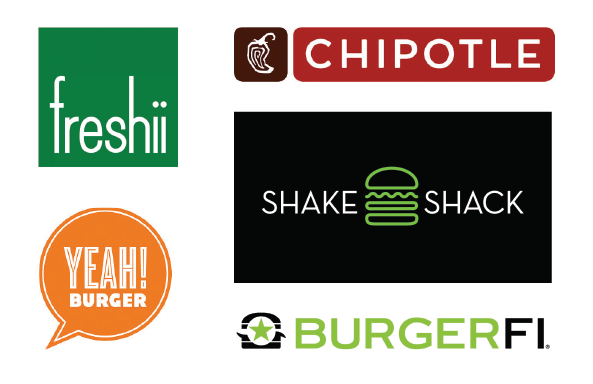
Qualities That Work For Competitor Brands:
- Modern dining areas with digital menus, and eco-packaging.
- Uses the color green to make the brand feel sustainable.
- Shows ways to trace their ingredients back to their source.
- Honors the values of Universalism and Diversity.
Statement and explanation of food quality helps. - House-made ingredients gives you a Unique Selling Proposition.
Qualities That Didn't Work For Competitor Brands:
- Most menu items are the same.
- Very long lines.
- Size per price (small portions).
- Menu item overload.
- Sometimes you have to pay for toppings.
2
Design Direction
At the onset of this phase, there were two design directions we could take based on the consumer profile. We decided to do a series of moodboards for each of these to determine the one that felt like the best visual solution.
To do that, I collected the images, symbols, color palettes, and typography that would best put the client’s ideas into a more tangible form. After compiling these collections, they were put onto a digital presentation from which the client provided me with feedback. Here’s but one of three moodboard solutions.
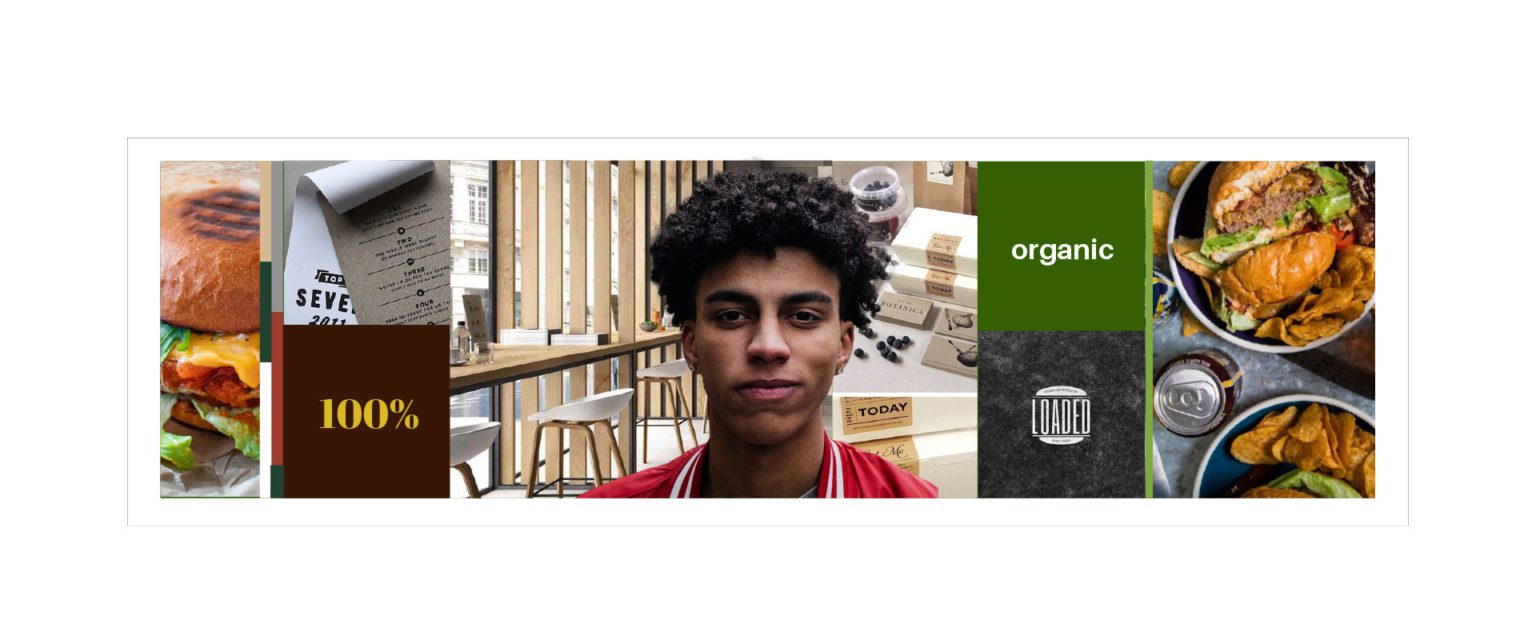
Once the client has approved the moodboard direction, then I had the go ahead to start conceptualizing ideas for the logo, logomark, wordmark, or symbol. There were dozens of sketches with multiple directions based on insight from the client, but ultimately, three of the best sketches were presented for feedback.
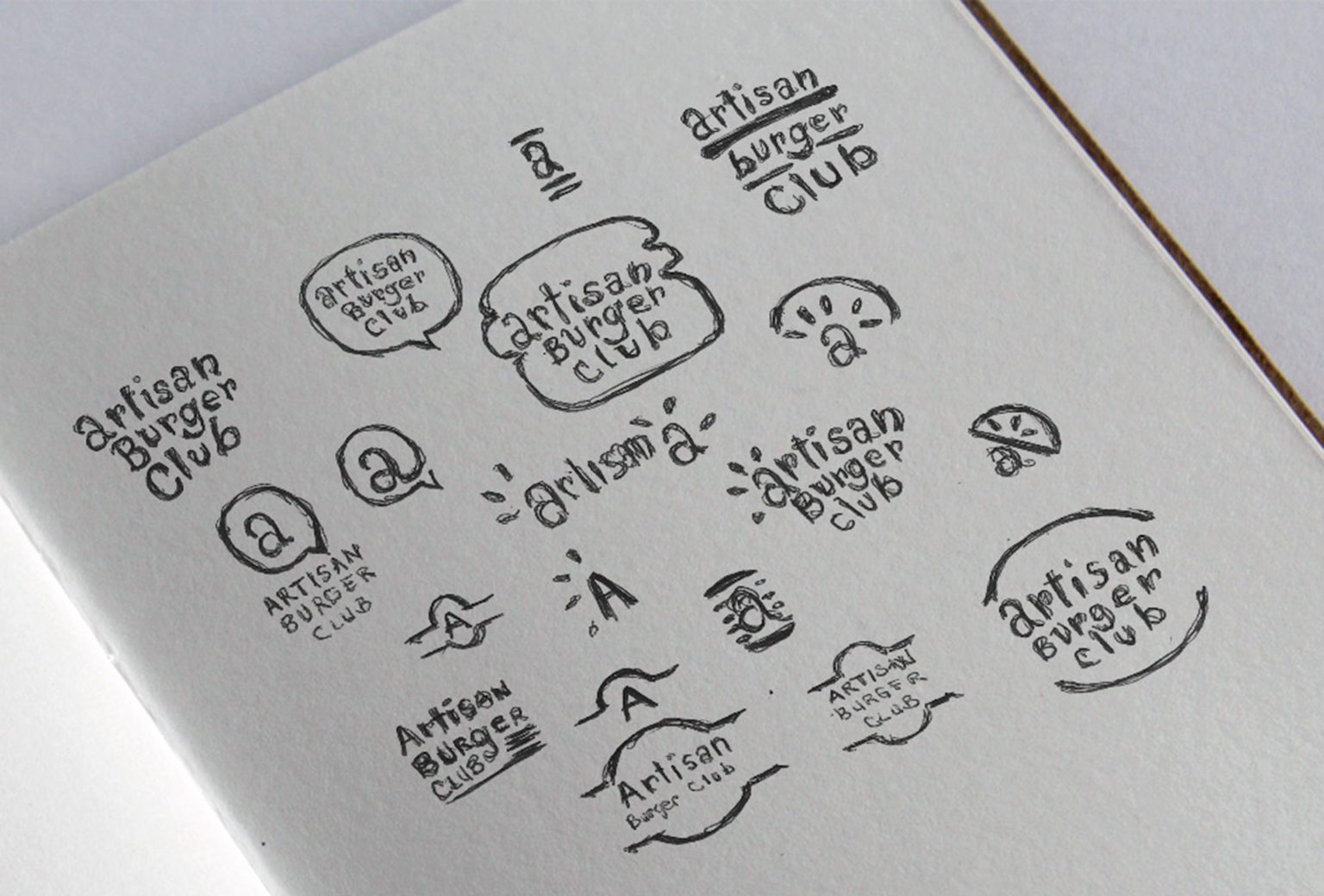
3
Design Implementation
Typography, Color Palette & Logo


